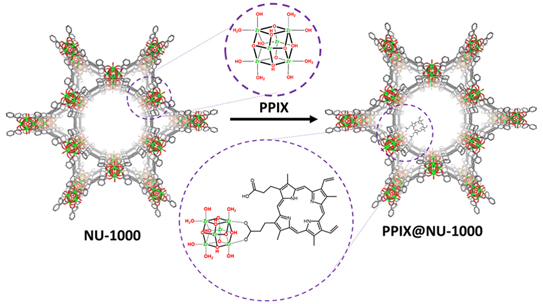Crossref Citations
This article has been cited by the following publications. This list is generated based on data provided by
Crossref.
Lee, Marilyn S
Lux, Matthew W
and
DeCoste, Jared B
2020.
BEAMS: a workforce development program to bridge the gap between biologists and material scientists.
Synthetic Biology,
Vol. 5,
Issue. 1,
Younis, Sherif A.
Kwon, Eilhann E.
Qasim, Muhammad
Kim, Ki-Hyun
Kim, Taejin
Kukkar, Deepak
Dou, Xiaomin
and
Ali, Imran
2020.
Metal-organic framework as a photocatalyst: Progress in modulation strategies and environmental/energy applications.
Progress in Energy and Combustion Science,
Vol. 81,
Issue. ,
p.
100870.
Kinik, F. Pelin
Ortega-Guerrero, Andres
Ongari, Daniele
Ireland, Christopher P.
and
Smit, Berend
2021.
Pyrene-based metal organic frameworks: from synthesis to applications.
Chemical Society Reviews,
Vol. 50,
Issue. 5,
p.
3143.
Harvey, Pierre D.
2021.
Porphyrin-based MOFs as heterogeneous photocatalysts for the eradication of organic pollutants and toxins.
Journal of Porphyrins and Phthalocyanines,
Vol. 25,
Issue. 07n08,
p.
583.
Siva Kaylasa Sundari, S.
Shamim Rishwana, S.
Ramani, R.
and
Vijayakumar, C. T.
2022.
Improvement in electrical and mechanical properties of di/trifunctional epoxies-based hybrid composites having metal organic frameworks (MOFs) as nanoparticulate filler.
MRS Communications,
Vol. 12,
Issue. 2,
p.
250.
Gupta, Arushi
Singh, Shalini
Sharma, Amit L.
and
Deep, Akash
2022.
Handbook of Green and Sustainable Nanotechnology.
p.
1.
Choi, Hye Min
Kim, Ye Ji
Choi, E Tae
Lee, Tai Yong
and
Lee, Suk Joong
2022.
Use of porphyrin-containing polymers of intrinsic microporosity as selective photocatalysts for oxidative detoxification of chemical warfare agent simulant.
Journal of Porphyrins and Phthalocyanines,
Vol. 26,
Issue. 04,
p.
340.
Zhao, He
Tao, Cheng-an
Zhao, Shiyin
Zou, Xiaorong
Wang, Fang
and
Wang, Jianfang
2023.
Porphyrin-Moiety-Functionalized Metal–Organic Layers Exhibiting Catalytic Capabilities for Detoxifying Nerve Agent and Blister Agent Simulants.
ACS Applied Materials & Interfaces,
Vol. 15,
Issue. 2,
p.
3297.
Gupta, Arushi
Singh, Shalini
Sharma, Amit L.
and
Deep, Akash
2023.
Handbook of Green and Sustainable Nanotechnology.
p.
91.
Wu, Ming‐Min
Su, Juan
Luo, Dong
Cai, Bing‐Chen
Zheng, Ze‐Lin
Bin, De‐Shan
Li, Yan Yan
and
Zhou, Xiao‐Ping
2023.
Ultrafast Photocatalytic Detoxification of Mustard Gas Simulants by a Mesoporous Metal–Organic Framework with Dangling Porphyrin Molecules.
Small,
Vol. 19,
Issue. 36,
Kulisiewicz, Ann M.
Garibay, Sergio J.
Pozza, Gabrielle R.
Browe, Matthew A.
Sparr, Owen
Singh, Sukhvir
Kelly, Lisa A.
and
DeCoste, Jared B.
2023.
Tunable Photocatalytic Singlet Oxygen Generation by Metal–Organic Frameworks via Functionalization of Pyrene-Containing Linkers.
ACS Applied Materials & Interfaces,
Vol. 15,
Issue. 34,
p.
40727.
Abazari, Reza
Sanati, Soheila
Bajaber, Majed A.
Javed, Muhammad Sufyan
Junk, Peter C.
Nanjundan, Ashok Kumar
Qian, Jinjie
and
Dubal, Deepak P.
2023.
Design and Advanced Manufacturing of NU‐1000 Metal–Organic Frameworks with Future Perspectives for Environmental and Renewable Energy Applications.
Small,





